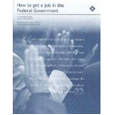Uncle Sam wants to help you… get a job:
If you are one of the millions of Americans hunting for a job, the U.S. Government wants you… to be prepared for the job search.
 According to figures released by the Bureau of Labor Statistics on April 10, 2012, called “Job Openings and Labor Turnover – February 2012”, the number of job openings has been climbing:
According to figures released by the Bureau of Labor Statistics on April 10, 2012, called “Job Openings and Labor Turnover – February 2012”, the number of job openings has been climbing:The number of job openings in the United States in February 2012 was 3.5 million… Although the number of job openings remained below the 4.3 million openings when the recession began in December 2007, the number of job openings has increased 46 percent since the end of the recession in June 2009.Image: Uncle Sam: “I want you to get a real job” poster. Source: SF Weekly
And today’s numbers from the Labor Department showed that the U.S. economy added 115,000 jobs in April while the unemployment rate fell to 8.1 percent.
Together with graduating college and high school seniors, this makes this a prime time for many Americans to start or re-start their job search.
Fortunately, the Federal Government has produced a number of helpful job and employment publications and resources to help you find that job, from researching careers, industries and salaries, to preparing resumes, writing cover letters and honing your interviewing skills.
Step 1: Identify the Right Career for You
Many job hunters have had to leave their original profession due to changes in the marketplace. To help them identify what types of jobs are out there and what skills are needed, here are some Federal publications:
 | Occupational Outlook Handbook, 2010-11 (Paperback) The must-have book for every career counselor, The Occupational Outlook Handbook is exceedingly useful for job hunters, particularly those who are changing careers or in an industry that is undergoing transition. It describes about 250 occupations in detail, covering what the types of tasks workers do on a particular type of job, the working conditions, the training and education needed, earnings, and expected job prospects. |
 | High-Earning Workers Who Don’t Have A Bachelor’s Degree This publication is still valid today, as it reviews occupations that earn relatively high salaries without requiring expensive college degrees. Ranges from accountants, to plumbers and electricians, repair people and mechanics, registered nurses and health technicians, managers and supervisors of all types, and more. Gives percentages of these that do not have bachelor’s degrees and typical weekly earnings (circa 1999). |
Step 2: Determine Whether You Should Get Additional Education and Training
Many job seekers need to acquire new skills or update their existing skills to become or stay competitive. These publications talk about the value of training
 | What It’s Worth: Field of Training and Economic Status in 2001 If you’ve ever doubted the value of education on your earning potential, the Census Bureau assembled these figures on what additional training is worth to one’s economic status and earnings. |
 | Apprenticeships: Career Training, Credentials, and a Paycheck in Your Pocket Some professions require going through apprenticeship training. This publication explains how apprenticeship works, listing apprenticeable occupations, and the years of training estimated for each occupation. |
Step 3: Preparing Your Work Credentials and Interviewing Skills
The next step is to hone your credentials and interviewing skills for the active job search. The following excellent publications and resources will help you ensure you put your best foot forward.
 | Resumes, Applications, and Cover Letters With this update of a popular publication, you will find out the best ways to present your credentials to prospective employers. Illustrations include a sample chronological resume, a sample functional resume, and a sample cover letter. The ‘for more information’ section lists some useful, established websites that contain advice about 21st century job hunting and resume writing. |
 | Getting Back to Work: Returning to the Labor Force After an Absence Many job seekers today have what is called an imperfect employment history due to layoffs, underemployment or other career gaps. This publication helps these returning workers know what to do and what to expect when returning to the labor force can help ease the transition back to work. Part 1 offers tips on how to identify, and prepare for, your ideal job. Part 2 helps you get set for the workforce. Part 3 suggests ways to maintain work-life balance. In sidebars throughout the article, you’ll find suggestions for some special re-entry situations as well as lists of additional resources. |
 | Employment Interviewing: Seizing the Opportunity and the Job This booklet gives useful advice on what to do before, during, and after a job interview to help you get that job. It also includes tips about job fairs. |
Step 4: Start Your Job Search
Federal Government Jobs:
 A useful publication for anyone seeking to apply for a Federal government job is “How to Get a Job in the Federal Government”. Read our previous blog post about this publication, entitled “Information about Getting a Federal Government Job”.
A useful publication for anyone seeking to apply for a Federal government job is “How to Get a Job in the Federal Government”. Read our previous blog post about this publication, entitled “Information about Getting a Federal Government Job”.Once you are ready to apply, you can find all current Federal jobs openings on the Federal job site, USAJobs.gov.
Private Sector and State Government Jobs:
Information and resources about where and how to conduct your job hunt can be found at CareerOneStop’s Job Search section.
Step 5: Research Typical Salary and Benefits
Hopefully, at this point you are receiving job offers and negotiating salary and benefits. These Federal publications can give you some ballpark figures of salaries for various occupations as well as unemployment laws in different states.
 | National Compensation Survey: Occupational Earnings in the United States, 2006 This Multimedia booklet and CD-ROM report on earnings for occupations common to a wide variety of establishments. Coverage includes office clerical, professional and technical, maintenance, custodial and material movement occupations. |
 | Occupational Employment and Wages, 2006 This guide provides occupational employment and wage data from across the United States. |
 | Employment and Wages Annual Averages, 2005 This Multimedia booklet and CD-ROM present 2005 employment and wages data as defined in the North American Industry Classification System. Data pertain to workers covered by State unemployment insurance laws and the Unemployment Compensation for Federal Employees (UCFE) program in all 50 States, the District of Columbia, Puerto Rico, and the Virgin Islands. |
 | Comparison of State Unemployment Insurance Laws, 2005 This valuable publication provides state-by-state information on workers covered by unemployment insurance, benefit eligibility, methods of financing, and other areas of interest in the unemployment insurance program |
Other Federal Job Hunting Resources:
- Occupational Outlook Quarterly – This periodical subscription service offered by the Government Printing Office is issued quarterly by the US Department of Labor Bureau of Labor Statistics and provides current information on employment trends and outlook, supplementing and bringing up to date information in Occupational Outlook Handbook.
- CareerOneStop: The Labor Department has created an excellent website for American job seekers. Called CareerOneStop.org, this job hunting portal helps you find the information and resources you need about careers, training, educational financial aid, job banks and more.
- It also has a Service Locator to help all job seekers and the unemployed find Federal, state and local employment resources in your area.
- Veterans now can find job-hunting help at their Veterans ReEmployment initiatives section.
- Buy them 24/7 at GPO’s US Government Online Bookstore in our Jobs and Employment Publications collection.
- Buy them at GPO’s retail bookstore at 710 North Capitol Street NW, Washington, DC 20401, open Monday-Friday, 9am to 4pm, except Federal holidays, (202) 512-0132.
- Find them in a library.
- Find some of the job-related data online on the Publications section of the Bureau of Labor Statistics website.
Filed under: Bureau of Labor Statistics, Department of Labor, Uncategorized




Hello Friends.........
ReplyDeleteGreat information.Thanks for sharing this useful information with all of us.Keep sharing
more in the future.
Have a nice time ahead.
Thanks